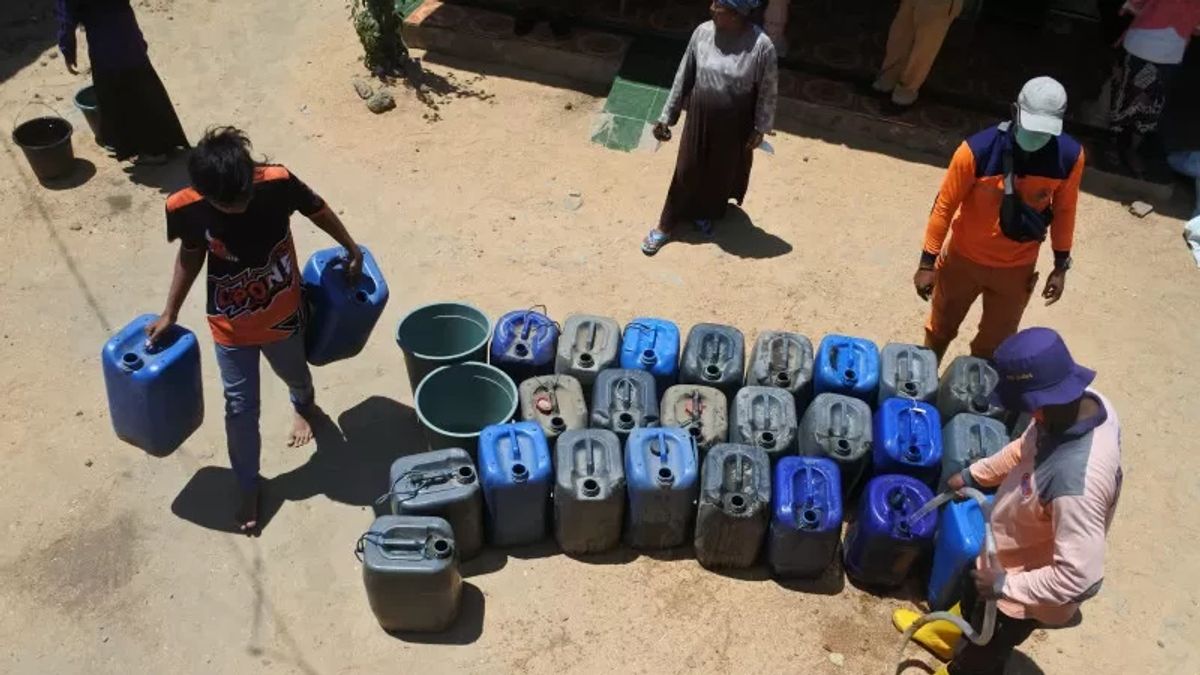JAKARTA - The Regional Disaster Management Agency (BPBD) of East Nusa Tenggara Province (NTT) focuses on mapping and collecting data on the threat of drought that will occur in the 2022 dry season.
"Mapping and data collection are key factors for the success of dealing with the effects of drought. So, this study is important because there are consequences," said Head of BPBD NTT Ambrosius Kodo at the Drought Management Coordination Meeting in NTT which was held virtually in Kupang, Thursday 9 June.
Mapping and data collection are two important things needed to take other strategic steps. Regarding the dry season in 2022 and drought, the reference data is information on early warnings from the BMKG.
From this information, he continued, officers must carry out validation and monitoring in the field. If there is loss of property and damage to the environment, BPBD can submit a disaster status determination to the leadership of the regional head.
He explained that data validation was important because of the budget allocation and the mobilization of resources to overcome these conditions. From that validation, there is a status determination that can be submitted. After determining the status, BPBD can apply for the use of unexpected expenditure funds (BTT) for disasters.
"If the BMKG drought has been released, do a study, validate, submit a disaster status, then propose the use of BTT," he said.
Drought is a hydrometeorological disaster or disaster triggered by weather and climate conditions with various parameters. From BPBD data, drought in NTT often occurs and almost every year. The intensity of drought cases is seen from the wide coverage of the affected area and the number of affected people, and the data is increasing every year.
In coordination meetings with district/city BPBDs throughout NTT and sector partners, this coordination is part of an effort to anticipate drought disasters in NTT in order to minimize the impact. Based on a disaster risk assessment in NTT, the drought area is almost 5,000 hectares with the largest locations in East Sumba and Kupang districts.
Ambrose said drought was a gradual disaster. Many people do not feel they are in a drought, unless they have difficulty accessing clean water and meeting food needs.
Based on BMKG information, 21 season zones (ZOM) or 92.3 percent have entered the dry season, while two ZOM or 8.7 percent have not entered the dry season. The ZOM in question is ZOM 242, namely the northern part of West Manggarai, East Manggarai, and northern Ngada. Next is ZOM 262, namely the northern part of Kupang and the western part of TTU
"Although nationally and locally in NTT there has been no early warning of drought, the NTT region has entered the dry season. Therefore, anticipation needs to be done," said Ambrose.
The English, Chinese, Japanese, Arabic, and French versions are automatically generated by the AI. So there may still be inaccuracies in translating, please always see Indonesian as our main language. (system supported by DigitalSiber.id)








